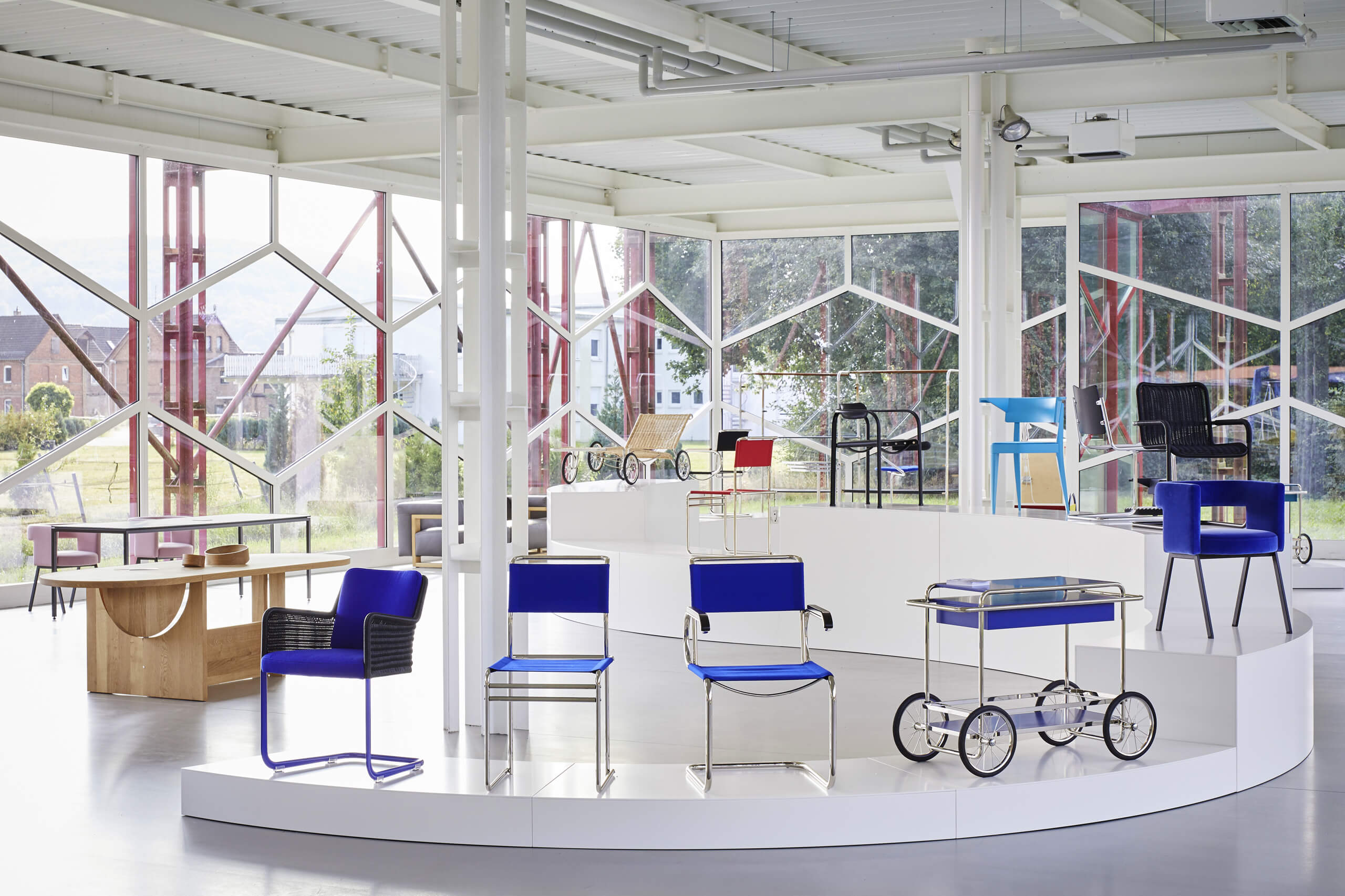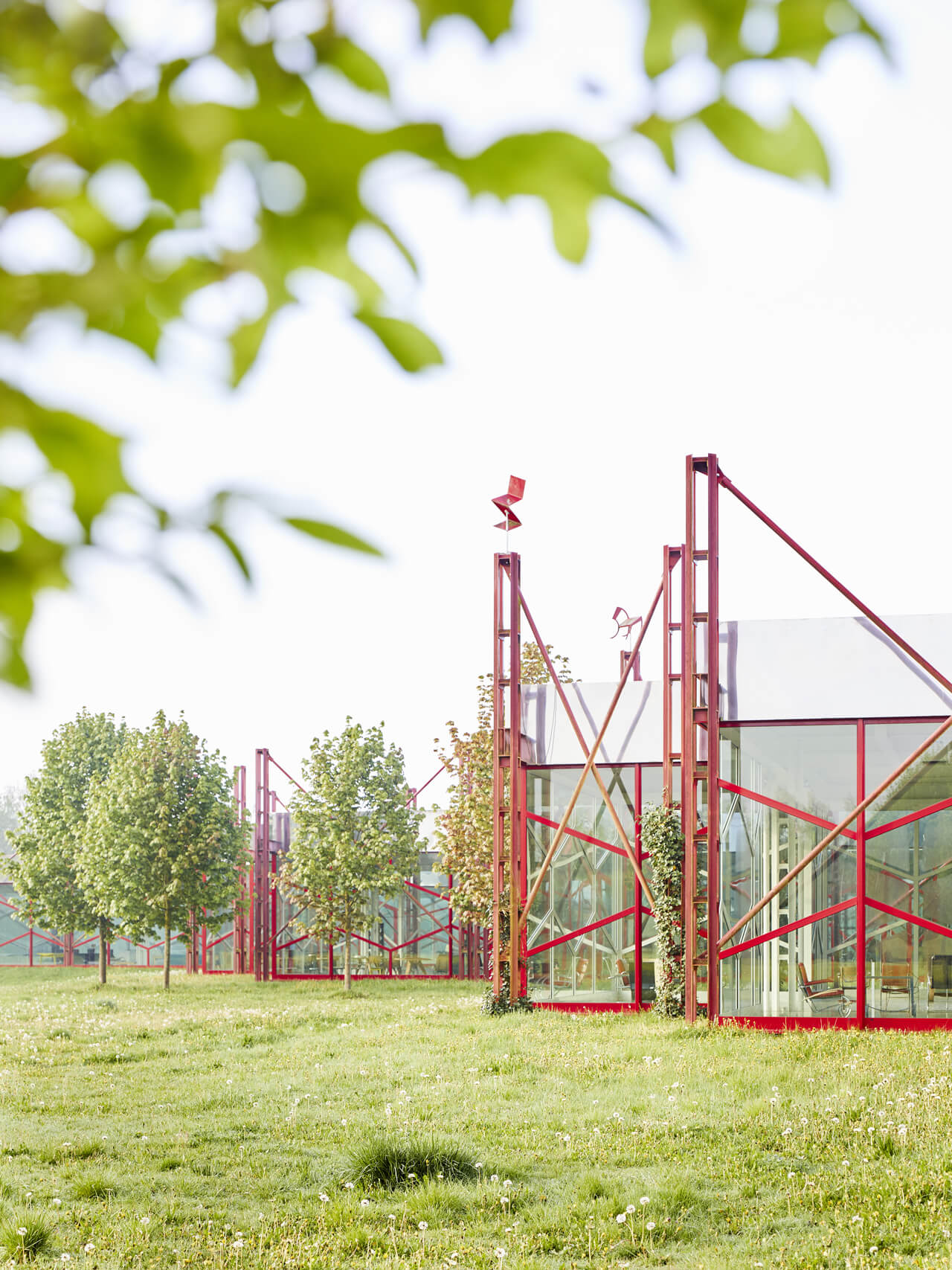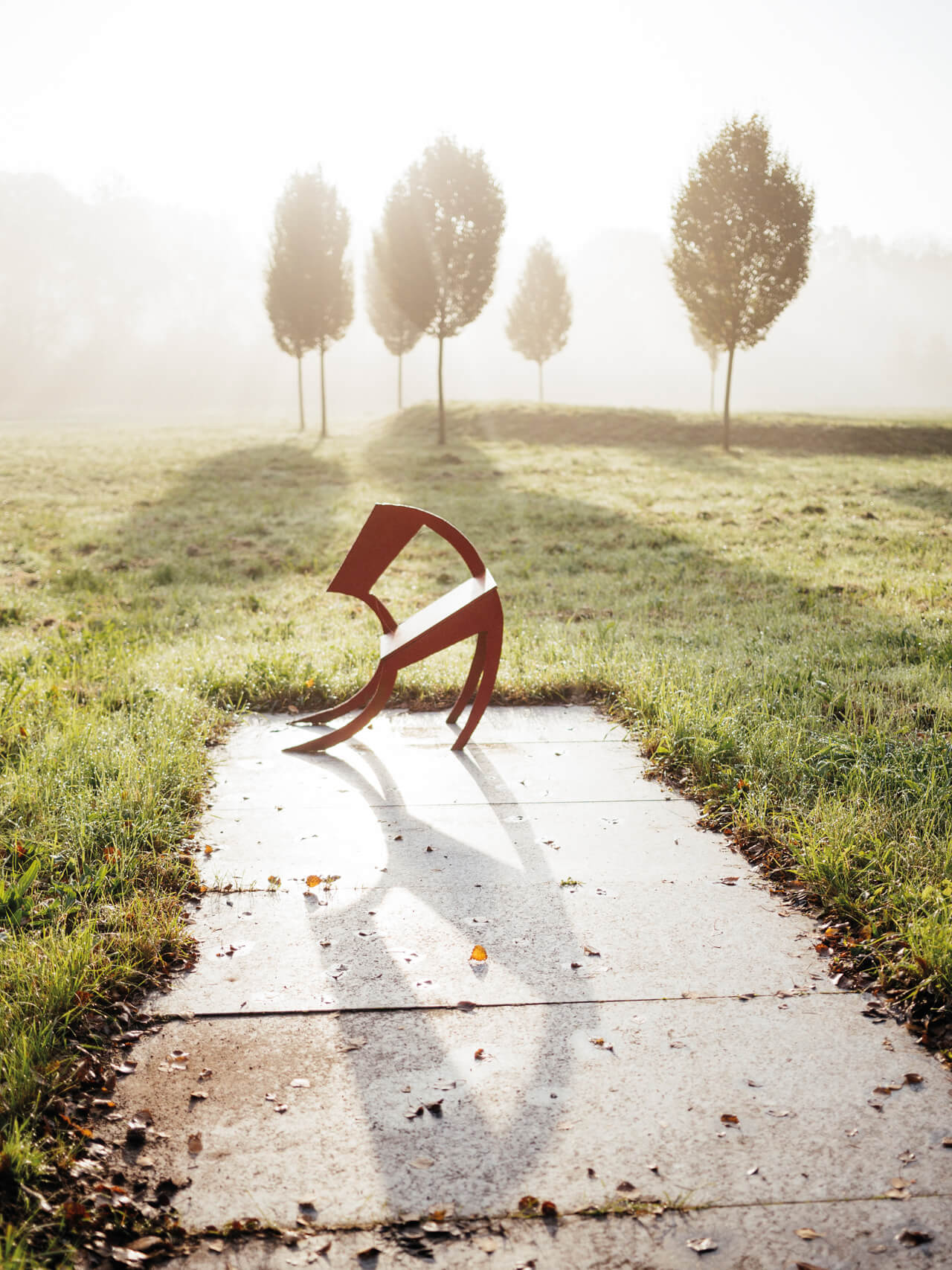Save the Date
Generations
Kerstin Bruchhäuser
24/08/2024 until 02/11/2024
Kerstin Bruchhäuser uses heritage textiles as a medium for her works. The antique trousseau she uses is respectfully recycled as a carrier of memories and transferred into a new context. In a series of installations in the Tecta Kragstuhlmuseum, new large-format and then small-scale works will be created that illuminate the origin, continued existence and present in the context of the permanent exhibition.
Find out more about the exhibition “Generations” by Kerstin Bruchhäuser.
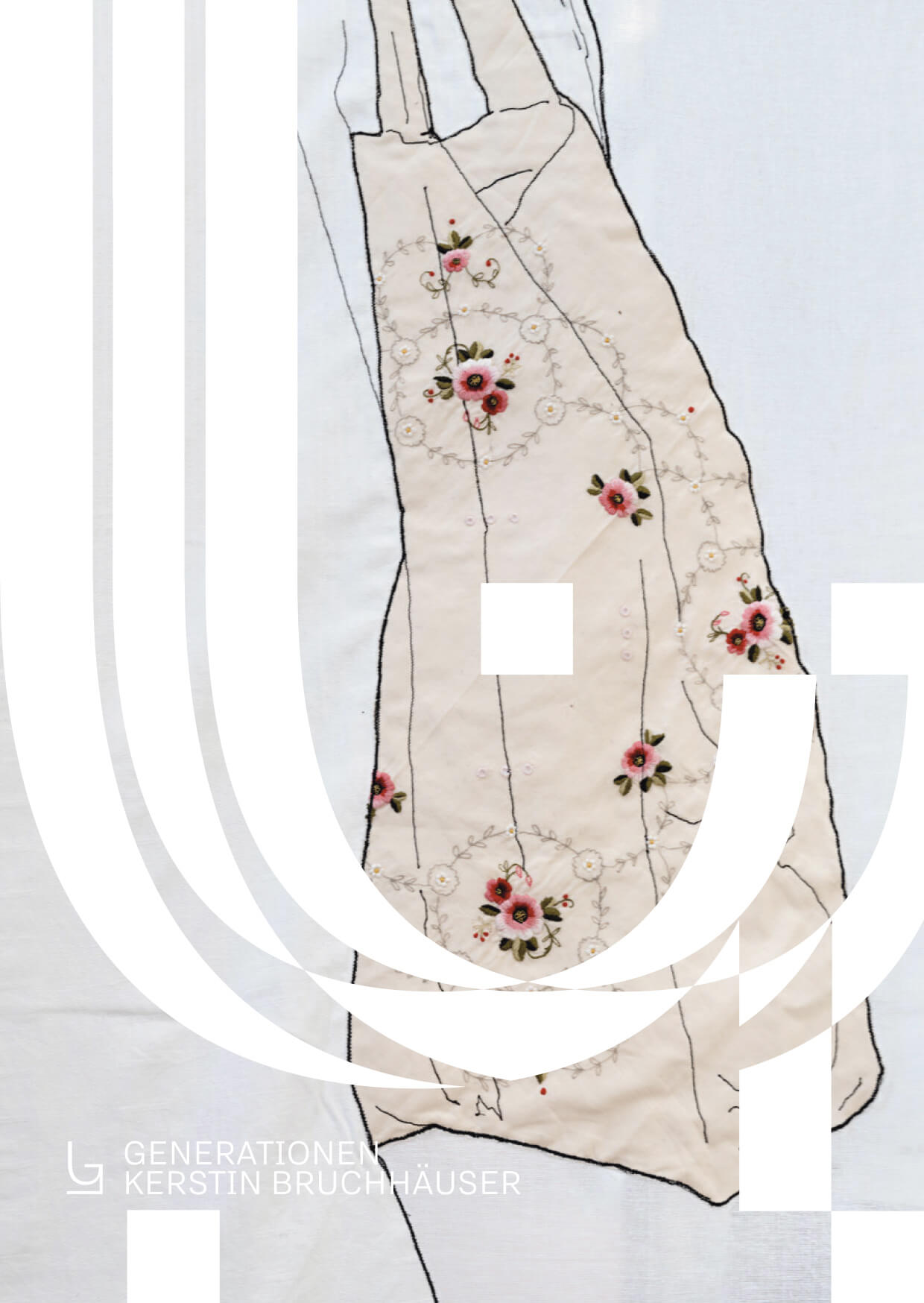
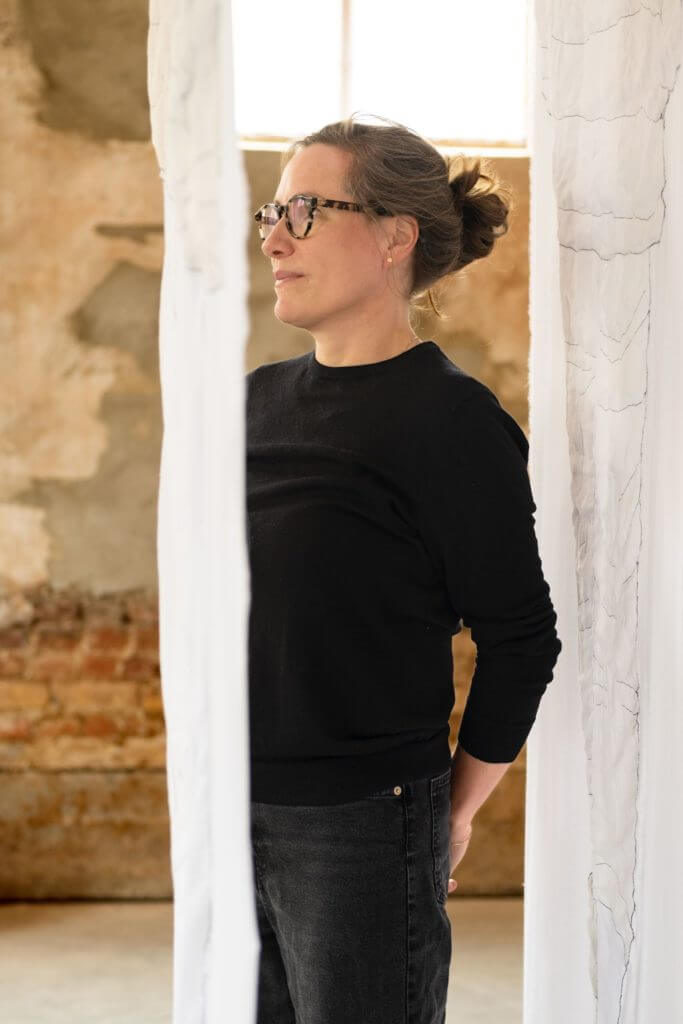
Photo left: Fred Dott, Photo right: Lucia Bartl
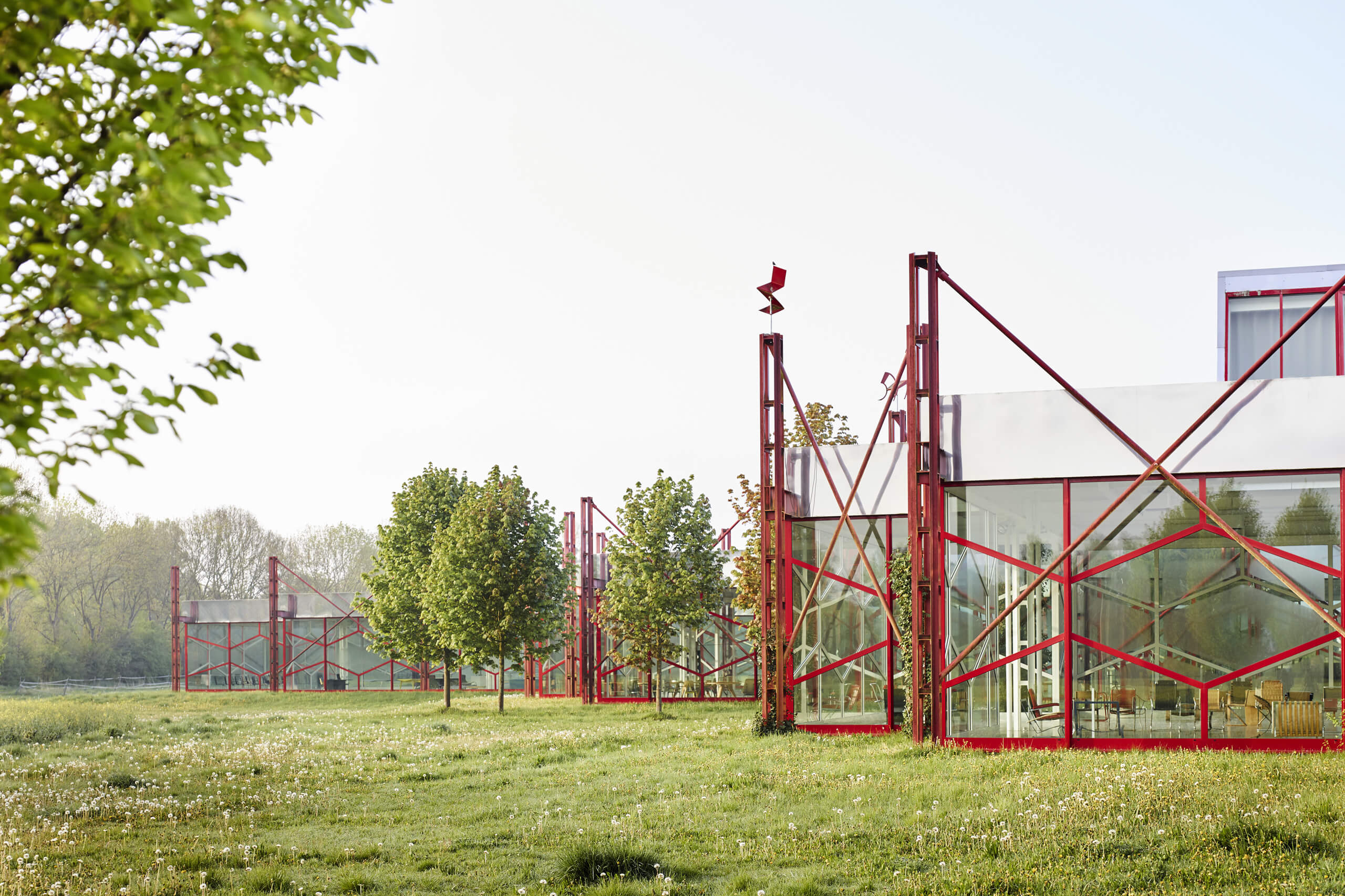
Cantilever Chair Museum
Lauenförde
Who would expect, behind this bulky name, to find a place that has fully devoted itself to floating and swinging, where one dreams of weightless sitting? Some describe Tecta as a work of art in its entirety.
+ read more
- einklappen
Anyone who enters the grounds of the firm which was shaped by the english architecture couple Alison and Peter Smithson will find themselves in a sculpture park. In front the manufactory, then the delicate Wewerka Pavilion, across three museum halls looking like glass combs: A steel work, painted white on the inside and a fiery red on the outside, with uniquely high support and chairs positioned at their tips. “The Ten Chairs of Lauenförde” is the name of the installation that corresponds with a red lattice tower, the entrance to the “Tecta Landscape”.
Daniela Drescher opens up the museums halls this morning. Here lies the collection compiled by Axel Bruchhäuser all about the cantilever chair that is today carefully continued by his nephew Christian Drescher and his wife Daniela Drescher. “Master forms of the modern era” stand beside “Anonymous Aristocrats” – almost 100 years of design history that have a connection to the firm Tecta are being told.
“This is a bit like a free flight hall for seating furniture,” explains Daniela Drescher in the first hall, “colourful and slightly chaotic at first glance. But when considered more closely one quickly determines that there are many similarities,” says the museum director, “and hence Peter Smithson’s thought of the ‘families of chairs’ comes to fruition. The collection resembles a large family get-together, where each chair has its own story and is connected to the others in a special way.” In this way, new products join the historical exhibition pieces. Here, the universe of the firm Tecta presents itself in a colourful and timely interplay.
Opening hours
March to December
Fri 10 – 17
Sat 10 – 16
Public holidays / Museum closed
Fri 23.08.2024 closed until 5 pm due to exhibition set-up
from 5 pm vernissage of the exhibition Generations
Winter holidays
16/12/2024 – 28/02/2025
Admission prices
Adults: 7,00 Euro
Reduced*: 5,00 Euro
Digital museum guides can be borrowed for a deposit.
*applies to pupils and students.
Children up to 10 years do not pay admission!
Guided tours 5-20 persons
only with advance booking
– during opening hours: €50 plus admission/person
– outside opening hours: 90€ plus admission/person
Tecta showroom
Admission free of charge
Adress
Tecta Kragstuhlmuseum
Sohnreystraße 8
37697 Lauenförde
Contact
Daniela Drescher
drescher@kragstuhlmuseum.de
0151 654 774 92
El Lissitzky,
1926
“The static architecture of the Egyptian pyramid has been overcome: Our architecture rolls, floats, flies. What comes next is floating, swinging. I want to co-invent and shape the form of this reality.”
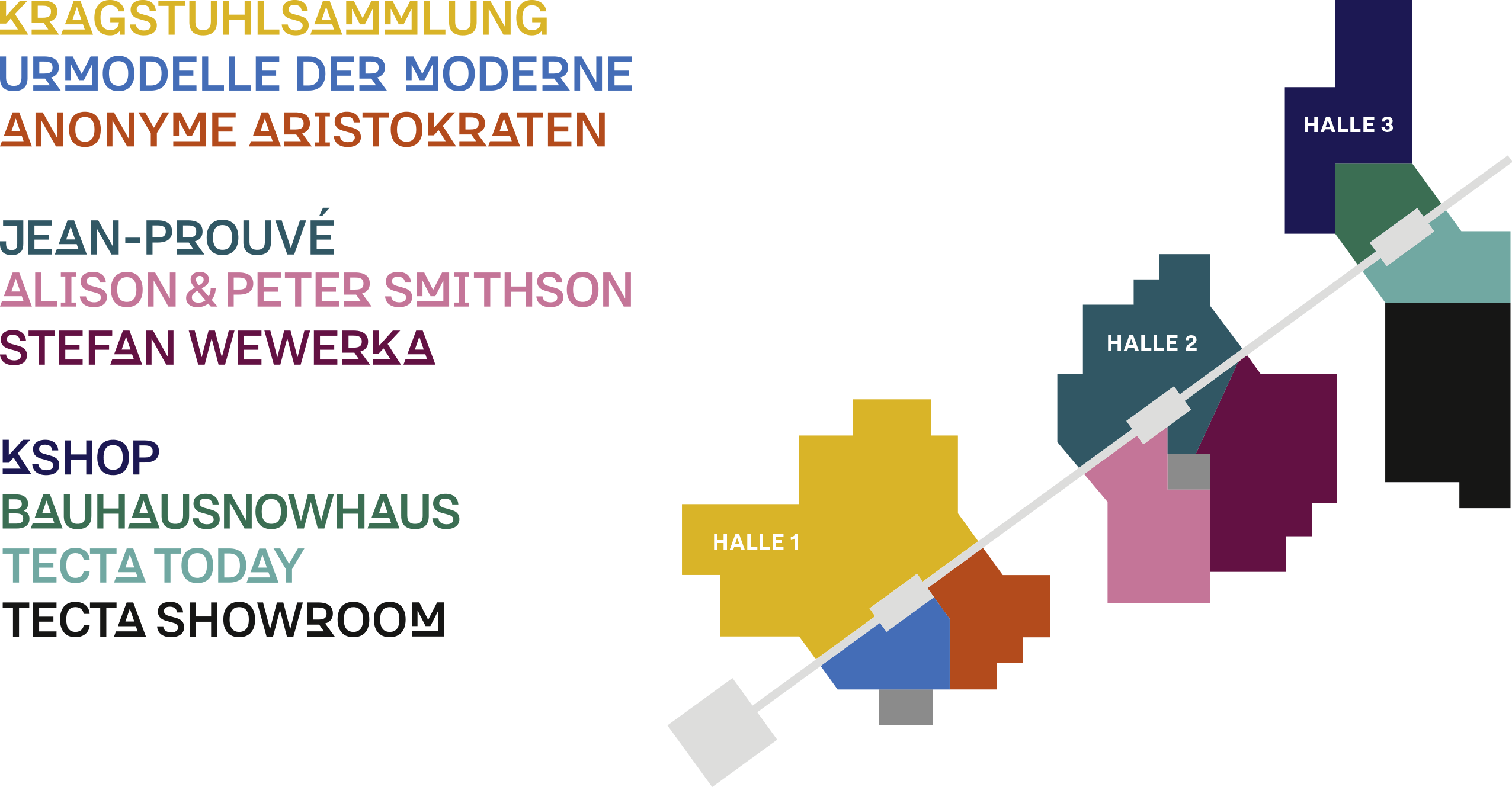
Cantilever chair collection
Original models of modernism
Anonyme Aristokraten
Jean-Prouvé
Alison und Peter Smithson
Stefan Wewerka
…
The cantilever chair collection documents the development of the “backless chair” from the rigid cantilever construction to the spring-loaded cantilever chair.
The Jean Prouvé archive illustrates the design principles of the French engineer and architect with over 100 originals.
+ read more
- einklappen
The collection of original modernist models includes original chairs ranging from Schinkel’s cast iron chairs to Wewerka’s designs from the 1980s.
The Anonymous Aristocrats collection contains artefacts by unknown designers that are in no way inferior to those of their famous contemporaries.
The Alison and Peter Smithson Archive and the Wewerka Studio contain numerous designs, prototypes and series products.
The TECTA exhibition shows the models of the current TECTA collection on over 1000 square metres.
Die designers
in the Cantilever Chair Museum
A piece of furniture that made history: the cantilever chair. A technical revolution and a symbol of the new era. The breaking up and floating that inspired artists and architects alike in the 1920s.
+ read more
- einklappen
For decades, Axel Bruchhäuser, founder of the cantilever chair collection, collated the developments surrounding the furniture: “For me, it was an instinctive search for the original form of the tubular steel chair,” he explains. “I was interested in the idea that gave rise to the cantilever chair.” Heinz Rasch, one of the originators of the idea, underpinned the name “cantilever chair” with the architectural constructions of half-timbered houses, which cantilever on the upper floor to support a bay window. This gave rise to the name for a piece of furniture that manages with two legs instead of four and appears completely weightless.
– Alvar Aalto
– Aagaard Andersen
– Alfred Arndt
– Marcel Breuer
– Ray and Charles Eames
– Walter Gropius
– Hugo Häring
– El Lissitzky
– Hannes Meyer
– Ludwig Mies van der Rohe
– Charlotte Perriand
– Jean Prouvé
– Heinz Rasch
– Gerrit Rietveld
– Alison & Peter Smithson
– Mart Stam
– Vladimir Tatlin
– Guiseppe Terragni
– Stefan Wewerka
– Sergius Ruegenberg
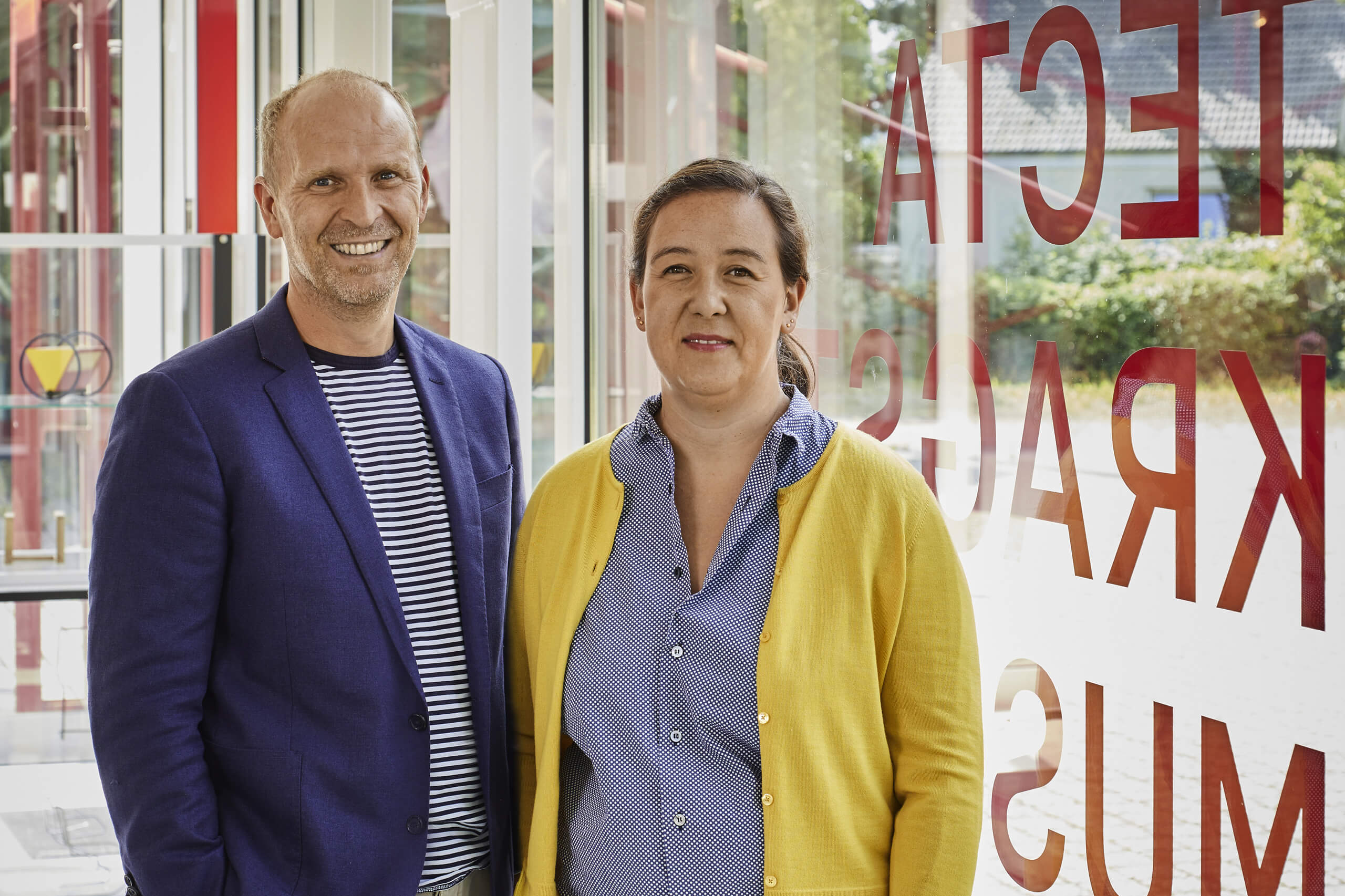
Where chairs fly and float: the Tecta cantilever chair museum.
An interview with Daniela and Christian Drescher
Behind the name “Kragstuhlmuseum” lies a small sensation: the world’s only museum dedicated to the development of the backless chair, the cantilever chair. A synthesis of the arts with exhibits that need not shy away from the world’s great design collections. At the same time, it is a place that is constantly evolving. Tecta Managing Director Christian Drescher and his wife Daniela Drescher, who has taken over the management of the Cantilever Chair Museum, explain where the journey will take them after the new renovation.
+ read more
- einklappen
The cantilever chair museum was founded in 1979 – why?
Christian Drescher: After taking over the Tecta company from Hans Könecke, Axel Bruchhäuser wanted to manufacture Bauhaus furniture under licence. Simply put, he needed the originals in order to learn how to manufacture them in series production true to the originals and in the spirit of the originators. This is how he laid the foundations for the collection. The medieval “Burg Beverungen” was home to the exhibition until the year 2000. In the meantime, however, the collection had grown to such an extent that it was only logical that we should have our own museum. In 2003, we moved into the new museum halls designed by Peter Smithson on the extensive site, the “Tecta-Landscape”. Here, the collection fulfils its three functions: museum, company archive and showroom.
The museum has an unusual name. How did it come about?
Christian Drescher: The museum is closely linked to the work of Tecta. In the early days, there were legal uncertainties about the copyright and usage rights to the cantilever chair. Axel Bruchhäuser looked for contemporary witnesses and tried to reconstruct the history of the furniture. He met the Gropius family, Marcel Breuer, Sergius Ruegenberg, Mart Stam and Jean Prouvé and published the book “The Cantilever Chair”, which is still part of the primary literature.
Why do you think the Kragstuhlmuseum is not a museum in the true sense of the word?
Daniela Drescher: A special feature of the collection is the location in which it is presented and its element of surprise: many visitors do not expect to find a collection of modern art in the provinces, on a greenfield site. The exhibits can be viewed from the outside as well as the inside, and they interact with the environment and architecture. Peter Smithson thought of the “Families of chairs”. A guiding principle that is reflected in the layout of the museum. The exhibits in our exhibition find their niches in the room and arrange themselves in relation to each other like at a large family reunion. There are closer and wider relationships, and everyone has a particular connection to everyone else.
Can these relationships around sitting still be presented in a contemporary way today?
Daniela Drescher: The collection itself is timeless, and the theme of sitting in a modern world is still relevant. Many visitors are amazed at the age of some of the exhibits because the designs seem so contemporary and familiar. The current relevance is therefore present in many cases and is emphasised by the fact that we show parts of our production that are made right next door.
Your products, your protagonists, have just been restaged. Why was it time to remodel the museum?
Christian Drescher: We followed Peter Smithson’s idea of an “Art Barn”, an art barn that allows easy access to the collection. Of course, you can’t sit on the exhibits, but they are exceptionally accessible to the visitor; they are neither on pedestals nor in display cases. However, we also wanted to pick up on Smithson’s idea of chair families and relationships. We therefore pulled the exhibits, which were previously lined up on the outside walls, into the room, regrouped them and placed them in relation to each other. A typographically designed text layer was also added.
Daniela Drescher: The museum halls, which were designed for transparency, were also simply too full. We sorted things out, stored some of the exhibits, removed the original sisal carpet and replaced it with a waxed flowing screed. The new, matt glossy floor emphasises the lightness and transparency of the architecture. The eye can wander and lingers on the details as if by magic.
A museum without walls – how does that work?
Christian Drescher: The Kragstuhlmuseum is probably the only museum that completely dispenses with white walls, instead being glazed all round and equipped with a latticework structure. This enables a complex visual relationship from the outside to the inside and vice versa. The exhibits, the museum – everything seems to float and move. As we did not want to do without explanatory texts when restructuring the museum, we opted for the concrete floor, on which the contents are graphically and colourfully designed to guide visitors through the collection.
The museum is part of Tecta Landscape. What else is behind this term?
Daniela Drescher: The Tecta Landscape is an industrial and landscape park that has grown over the years. Many small and large interventions, whether in the architecture of the company building or landscaping ideas, were realised in a long process by the architect couple Alison and Peter Smithson. Alison and Peter Smithson’s work on the landscape was completed with the Kragstuhlmuseum. To this day, we are in close contact with their descendants, who are sensitively looking after their parents’ legacy. Simon Smithson, son and himself a successful architect, designed an outdoor platform between the museum and the company building in 2006, creating a square with magnificent lines of sight that forms the new centre of the Tecta Landscape.
All of this is complemented by the recently completed refurbishment and remodelling of the offices and company building by Andree Weißert. The Berlin architect has succeeded in revealing new and surprising visual axes to the landscape park. The red-painted steel beams in the offices also correspond with the red colour of the museum.
The collection of the Cantilever Chair Museum is constantly evolving. What is your goal in ten years’ time?
Christian Drescher: One goal is to further develop the collection. After all, everything is in motion – constructive ideas and new materials make new designs possible. We scrutinise and research them in order to find contemporary solutions. The museum always shows the core of what we are currently working on; it is about continuous further development. Younger visitors in particular are still fascinated by modernist ideas and objects. We want to cultivate and expand this. This also includes opening up the museum further. The Tecta Landscape should be a lively place. To provide inspiration and facilitate creative and constructive dialogue.
From Bauhaus to Nowhaus
15 June 2019
In the Bauhaus anniversary year, Tecta remodelled the cantilever chair museum and opened the newly designed and excitingly staged exhibition with a grand celebration. Each of the three museum halls was inaugurated with a corresponding piece of music, masterfully performed by the “TenHagen Quartet”. Guests were able to explore and discover the exhibition piece by piece.
+ read more
- einklappen
The cantilever chair museum displays around 500 exhibits dedicated to the theme of floating seating. A theme of the century, as Bauhaus founder Walter Gropius aptly put it, “overcoming the gravity of the earth by floating in effect and appearance”. The exhibition, supported by media stations, iPad guides, films and interviews, has nothing to hide from the international design collections. We look forward to your visit to Lauenförde!


